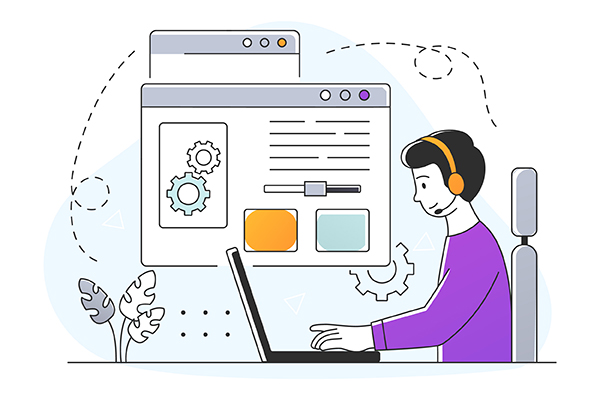
Workplace Harassment Prevention: Building a Culture of Respect
January 30, 2024
LMS Implementation: A Step-by-Step Guide to Success
February 8, 2024Getting ROI from Your Learning Management System (LMS)
Never stop learning, because life never stops teaching.
World of business too is not an exception to this. Learning and development play a crucial role. In this regard, investing in a Learning Management System (LMS) can be a game-changer. Many organizations are realizing the potential of LMS not just as a tool for employee training but as a key driver for Return on Investment (ROI).
This blog explores the practical ways businesses can get the most out of their LMS, focusing on real-life examples from the Indian context.

Understanding LMS ROI
-
Streamlined Onboarding Processes:
Efficient onboarding process is very important for employee productivity. By using an LMS, businesses can streamline onboarding processes, ensuring new hires quickly grasp company policies, culture, and job-specific skills. This leads to faster integration and higher productivity, translating into tangible ROI.
IT companies can see significant (say 25% to 30%) reduction in onboarding time (hence the cost) after implementing an LMS, resulting in quicker employee contributions and cost savings.
2. Cost Reduction through E-Learning:
Traditional training methods can be expensive, especially when considering travel, printed materials, venue and other logistic related costs. With LMS, businesses can shift to cost-effective e-learning modules, reducing expenses associated with in-person training sessions.
Companies can reduce their training costs by switching to e-learning modules on their LMS, allowing them to allocate resources more efficiently.
Click here for the cost saving if you shift from classroom mode to e-learning mode.
Maximizing LMS Features for ROI
3. Personalized Learning Paths:
Tailoring learning paths based on individual needs enhances employee engagement and knowledge retention. Smart organizations can leverage LMS features to create personalized learning experiences for diverse teams.
A learning path is a curated sequence of courses or learning activities designed to guide learners through a structured educational journey. It helps organize and present content in a logical order, allowing learners to progress systematically and achieve specific learning objectives.
Learning path, once implemented in their LMS, helps increase employee satisfaction, leading to improved performance and client satisfaction.
4. Skill Gap Analysis and Training:
LMS analytics can be a powerful tool for identifying skill gaps within the workforce. By understanding these gaps, businesses can design targeted training programs to upskill employees, ensuring they meet current job requirements.
Using LMS analytics to identify skill gaps in the production team, targeted training programs can result in increased production efficiency, directly impacting ROI.
Demonstrating Tangible Results
5. Improved Compliance and Certification:
For industries with strict compliance requirements, an LMS ensures that employees undergo mandatory training, reducing the risk of non-compliance. Additionally, businesses can track certifications, proving adherence to industry standards.
Example: A clinical pharma company based in Hyderabad achieved almost 100% compliance with regulatory training standards after implementing an LMS, preventing potential fines and legal issues.
6. Enhanced Employee Performance:
Regular feedback and assessments on the LMS allow businesses to monitor employee performance. (Remember the phrase: Training without assessment is a vacation!) This data-driven approach enables targeted interventions for improvement, contributing to overall workforce productivity.
Implementing performance-focused training modules on their LMS can result in considerable decrease in the number of customer complaints.
In the ever-evolving landscape of the business ecosystem across the globe, the importance of continuous learning cannot be overstated. The beautiful thing about learning is that nobody can take it away from you.
Leveraging an LMS goes beyond just providing training; it's about strategically aligning learning initiatives with business goals. The scenarios highlighted demonstrate that the right LMS, implemented thoughtfully, can be a catalyst for positive change, driving ROI and ensuring a competitive edge in the market.
Investing in an LMS is not just a cost; it's an investment in the growth and success of your business. By maximizing the features of your LMS, tailoring it to your organization's unique needs, and measuring tangible outcomes, you can ensure that your LMS becomes a true asset in achieving and surpassing your business objectives.
As businesses continue to embrace the digital age, the role of LMS in shaping the workforce of tomorrow becomes increasingly significant, contributing to a thriving and competitive business landscape.
Checkout K-nest LMS for Employee Training.



